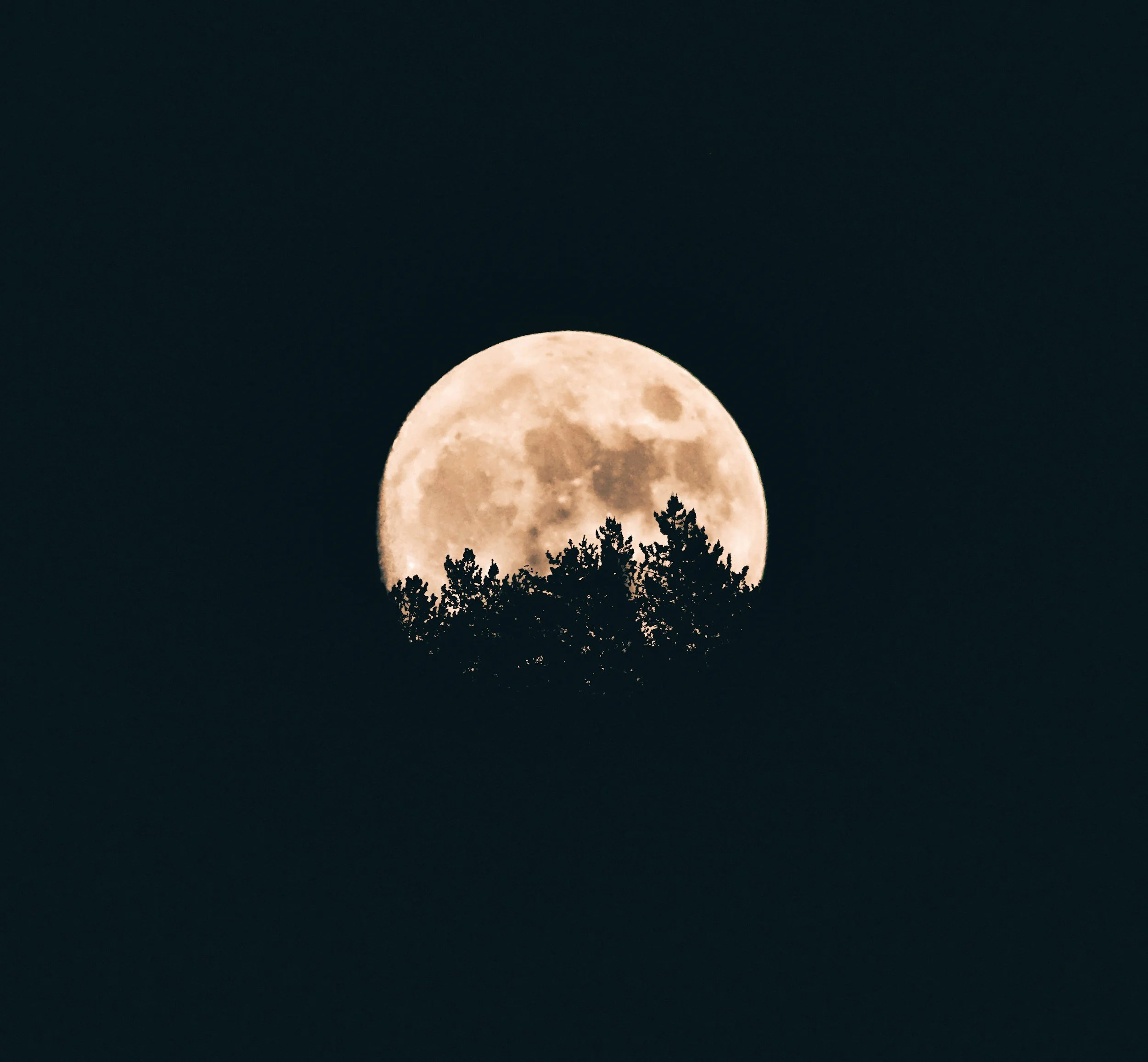Referred to as the Full Hunter's Moon by some Native Americans because it occurred at the time they were hunting in preparation for winter, the Full Moon of late October has also been called the Travel Moon and the Dying Grass Moon.
Photo by Aron Visuals on unsplash
Harvests and Hunters
The Harvest and Hunter's full moons are interrelated. The Harvest Moon is the full moon closest to the autumnal equinox. The Hunter’s Moon is the full moon after the Harvest Moon. Full moons occuring early in September, before the Autumnal Equinox, are sometimes called the "Green Corn Moon" to distinguish them from the later moon when the plants were ready for harvesting.
Moon Illusion
A rising full moon often looks larger than it is does later in the evening, even though its image is no larger near the horizon than overhead. Some psychologists have suggested this optical "moon illusion" could be due to the human eye and brain subconsciously comparing its size to foreground objects when close to the horizon.
Prove it to yourself by holding up a pinky finger at arm’s length and using it to totally eclipse the moon when it is near the horizon and when it is overhead.
Nevertheless, the full moons of autumn seem magically bigger and brighter. They rise earlier, leaving a shorter period of darkness between sunset and moonrise..
The Moon's Light
Moonlight is peculiarly favorable to reflection. It is a cold and dewy light in which the vapors of the day are condensed, and though the air is obscured by darkness, it is more clear. Lunacy must be a cold excitement, not such insanity as a torrid sun on the brain would produce.
In (Abraham) Rees's Cyclopedia it is said, "The light of the moon, condensed by the best mirrors, produces no sensible heat upon the thermometer."
The light of the moon, sufficient though it is for the pensive walker, and not disproportionate to the inner light we have, is very inferior in quantity and intensity to that of the sun.'
The Cyclopedia says that Dr. Hooke has calculated that "it would require 104,368 full moons to give a light and heat equal to that of the sun at noon," and Dr. Smith says, "The light of the full moon is but equal to a 90,900th part of the common light of the day, when the sun is hidden by a cloud."
But the moon is not to be judged alone by the quantity of light she sends us, but also by her influence on the earth. No thinker can afford to overlook the influence of the moon any more than the astronomer can.
"The moon gravitates towards the earth, and the earth reciprocally towards the moon." This statement of the astronomer would be bald and meaningless, if it were not in fact a symbolical expression of the value of all lunar influence on man. Even the astronomer admits that "the notion of the moon's influence on terrestrial things was confirmed by her manifest effect upon the ocean," but is not the poet who walks by night conscious of a tide in his thought which is to be referred to lunar influence, in which the ocean within him over-flows its shores and bathes the dry land?' Has he not his spring-tides and his neap-tides, the former sometimes combining with the winds of heaven to produce those memorable high tides of the calendar which leave their marks for ages, when all Broad Street is submerged, and incalculable damage is done to the ordinary shipping of the mind.
Rees says : "It is remarkable, that the moon during the week in which she is full in harvest, rises sooner after sun-setting than she does in any other full moon week in the year. By doing so she affords an immediate supply of light after sunset, which is very beneficial to the farmers for reaping and gathering in the fruits of the earth ; and therefore they distinguish this full moon from all the others in the year, by calling it the harvest moon."
~ Henry David Thoreau. September 20, 1851

